
Gardeners all over the world liked the decorative and rapidly growing oxalis so much that it spread throughout the continents in a matter of years. It is bred in apartments, planted in containers and used to decorate flower beds and borders. Let’s tell you more!
general information
Kislitsa got its name from the characteristic sour taste of the leaves. By nature, this is a flowering herb from South America, which is also called false clover. There are perennials and annuals, but outwardly they are very similar.
Oxalis has a creeping surface rhizome, which gradually grows overgrowths, similar to small tubers. The height of the ornamental grass is up to 30 cm, and usually even less. At the same time, the length of the palmate leaves on long petioles easily reaches 15 cm. It is interesting that, depending on the weather and time of day, the leaves can droop and rise.
In late spring, oxalis blooms, and continues to bloom for another month. Each peduncle has one or more tubular buds that open in beautiful curved funnels. The most common shades are white, yellow and pink.

Types of acid
Kislitsa is very diverse, but only a few species have taken root in Russia. In indoor conditions, you can still experiment with breeding hybrids, but in the garden, we advise you to stay on the time-tested classics!
Common oxalis
The most common perennial species that grows in coniferous forests and gets along well with mushrooms. Finger leaves are collected from bizarre heart-shaped fragments. The flowers are solitary, light, but with distinct dark veins.

Variegated oxalis
A very unusual look with multi-colored buds – white with a burgundy border. Variegated varieties also differ in the shape of leaves from thin long parts. At night, the flowers are rolled into a tube.

Triangular oxalis
These are the very purple leaves that so resemble the wings of butterflies. This species is most often grown indoors. It looks even more bizarre during flowering, when long whitish tubular buds bloom.

Tuberous oxalis
It is an edible plant that is grown in its native countries together with other garden tuberous plants. This acid is appreciated for its high starch content. But in general, it is also quite decorative with its pink flowers.

Glandular oxalis
Great for garden and container use. It grows into a small but very dense bush up to 15 cm wide. Segments of leaves are folded as if in a fan. The flowers have a beautiful pink-silvery shade.

Four-leaf oxalis
Its spectacular leaves are composed of four segments, and are almost brown in the center. But the edge is light green. The bush is small, up to 15 cm, and, in fact, it is a lush rosette on a short stem. It blooms with loose umbellate inflorescences of red, pink or purple flowers.
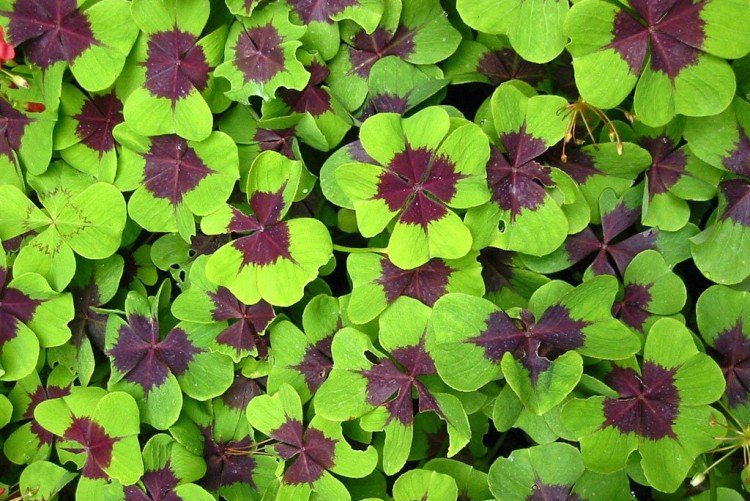
Carob oxalis
A wonderful ground cover that grows so quickly and rapidly that some consider it a weed. The leaves are collected from heart-shaped segments of a burgundy or brown shade.

Hamedorea (50 photos): types, cultivation and care at home
Sour acid care
Kislitsa loves warmth and does not tolerate frost. In the summer, it can be taken outside or planted in the garden, but wintering is strictly indoors. For the rest, it almost does not cause problems, despite its exotic appearance.
Temperature
The ideal temperature for acid is from 20 degrees, but at the same time it definitely needs fresh air. In the summer, it is better to take indoor flowerpots out onto the balcony, or at least ventilate them more often. In winter, stick to a temperature of 12-18 degrees.

Lighting
Kislitsa definitely needs a long sunny day, up to 14 hours. But at the same time, diffused light is desirable, so that by noon it is shaded. Indoor flowerpots will need additional lighting in winter.

Watering
In summer, sour cherry is watered often and intensively, as soon as the top layer dries up. Sadovaya kislitsa usually has enough natural precipitation. During the rest period, watering is enough once every 1-1.5 months. In addition, in hot weather, sour cherry can be sprayed. But in general, it adapts well to any humidity in the air.

The soil
Choose an airy, lightweight soil for deciduous plants. Multipurpose mixes will also work, but add baking powder to them. In the garden, the soil is dug up in advance with peat and humus.

Fertilizers and feeding
For feeding, use mineral mixtures with nitrogen and phosphorus – for leaves and root system. But a very low concentration is needed – half the recommended rate. Garden species can be fed with organic matter, and indoor species can be fed with wood ash and succinic acid.

Pruning
To make the oxalis look neat, it needs to be thinned periodically. This also applies to indoor shrubs and garden ground cover species. And always remove dry leaves and dead buds.

Wintering
This is true for garden species. In autumn, the ground part of the sorrel dies off, and then you need to carefully dig up the tubers and leave them to winter in a dark, cool place. In early spring, dig them into the soil with sand in containers, and only then plant them in the garden.
In the southern regions, tubers can be left to winter outdoors. But all the same, after the dying off of the ground part, you need to mulch them with a thick layer so that they do not freeze through.

Transfer
Before transplanting, you must first stop watering and dry the earthen lump. After that, they carefully passed the plant into a flowerpot a couple of centimeters more. This is necessary, among other things, to stimulate the growth and formation of daughter tubers. In most cases, oxalis calmly tolerates transshipment even during flowering.

Date palm (50 photos): types, care and cultivation at home
Reproduction and planting of acid
Garden sour cherry is planted with seeds directly into the ground by mid-spring. After 2 weeks, seedlings hatch, but the entire first year the plant grows a root and a rosette. Already on the second – the bushes acquire their decorative effect and bloom. In the garden, young plants are planted to a depth of about 3.5 cm and in increments of 10-12 cm.
At home, sour cherry is most often propagated by cuttings, and any part of the plant is generally suitable. Even individual leaf segments take root well. But it is better to root them immediately in loose soil with sand and humus. In warmth and in the sun, after 3 weeks, they will safely take root.

Pest and disease control
Oxalis has excellent strong immunity, which is partly due to its high acid content. Even fungus and spider mites rarely affect it. Therefore, no measures are needed here. Just use medications and adjust the humidity!

Epipremnum (50 photos): types, cultivation and care at home
Kislitsa – photo
Oxalis is very beautiful and good in all conditions. We suggest taking a closer look at what its fancy leaves are worth in our photo gallery!










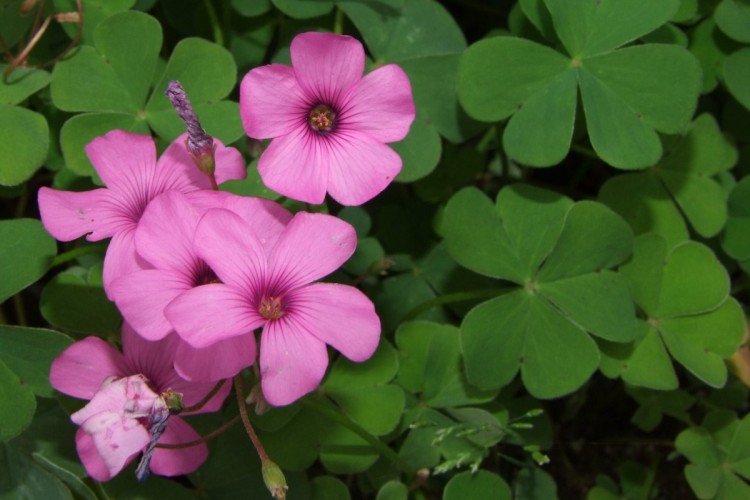



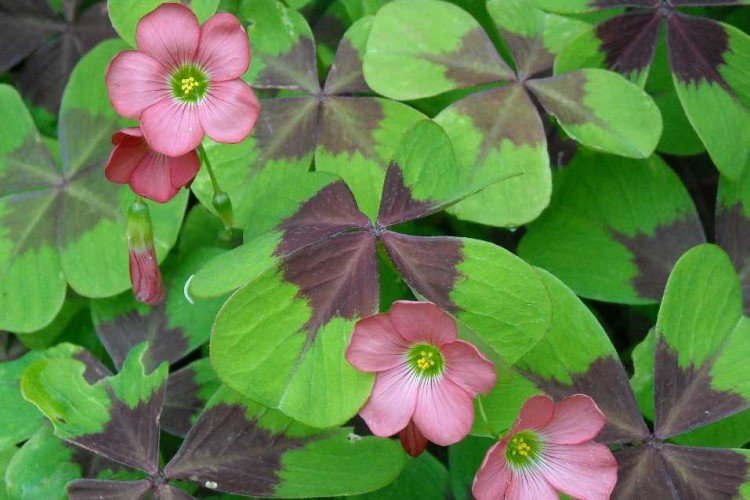
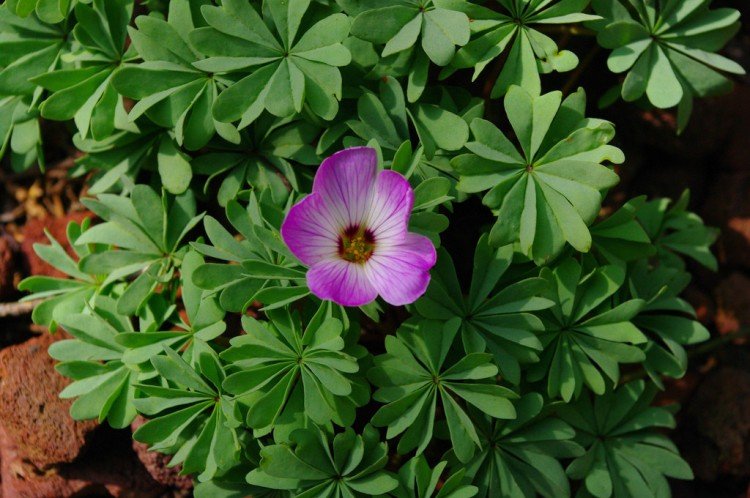



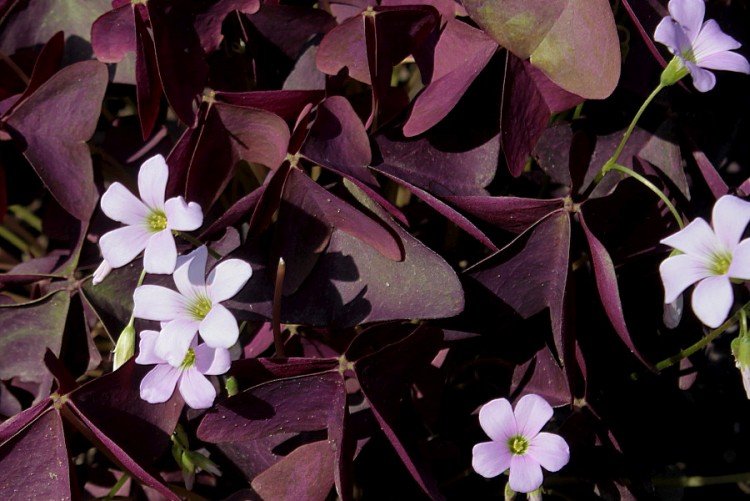
Did you like the publication? Subscribe to our channel in Yandex.Zen, it helps us a lot in our development!






